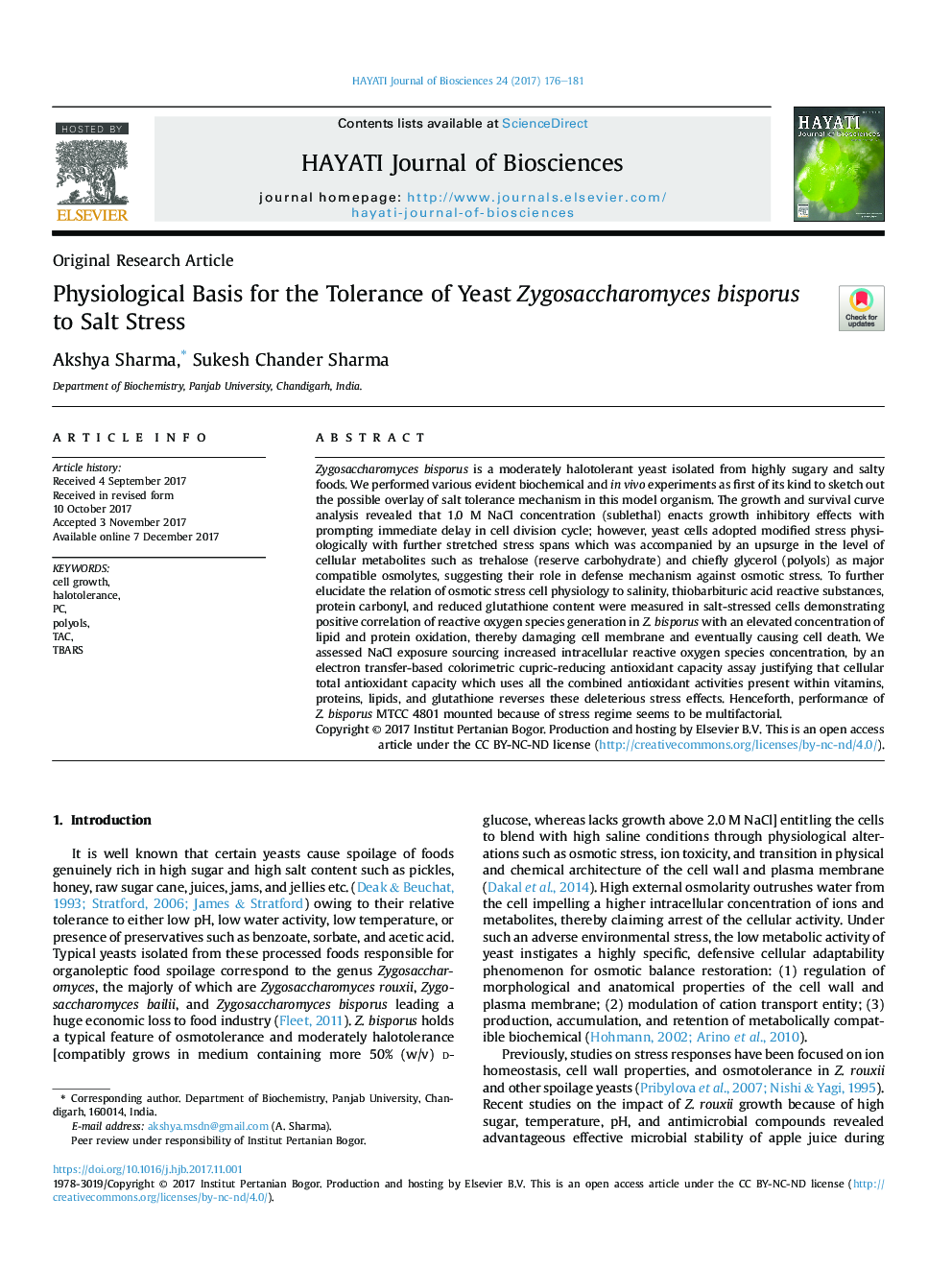| Article ID | Journal | Published Year | Pages | File Type |
|---|---|---|---|---|
| 8415018 | HAYATI Journal of Biosciences | 2017 | 6 Pages |
Abstract
Zygosaccharomyces bisporus is a moderately halotolerant yeast isolated from highly sugary and salty foods. We performed various evident biochemical and in vivo experiments as first of its kind to sketch out the possible overlay of salt tolerance mechanism in this model organism. The growth and survival curve analysis revealed that 1.0 M NaCl concentration (sublethal) enacts growth inhibitory effects with prompting immediate delay in cell division cycle; however, yeast cells adopted modified stress physiologically with further stretched stress spans which was accompanied by an upsurge in the level of cellular metabolites such as trehalose (reserve carbohydrate) and chiefly glycerol (polyols) as major compatible osmolytes, suggesting their role in defense mechanism against osmotic stress. To further elucidate the relation of osmotic stress cell physiology to salinity, thiobarbituric acid reactive substances, protein carbonyl, and reduced glutathione content were measured in salt-stressed cells demonstrating positive correlation of reactive oxygen species generation in Z. bisporus with an elevated concentration of lipid and protein oxidation, thereby damaging cell membrane and eventually causing cell death. We assessed NaCl exposure sourcing increased intracellular reactive oxygen species concentration, by an electron transfer-based colorimetric cupric-reducing antioxidant capacity assay justifying that cellular total antioxidant capacity which uses all the combined antioxidant activities present within vitamins, proteins, lipids, and glutathione reverses these deleterious stress effects. Henceforth, performance of Z. bisporus MTCC 4801 mounted because of stress regime seems to be multifactorial.
Related Topics
Life Sciences
Agricultural and Biological Sciences
Ecology, Evolution, Behavior and Systematics
Authors
Akshya Sharma, Sukesh Chander Sharma,
